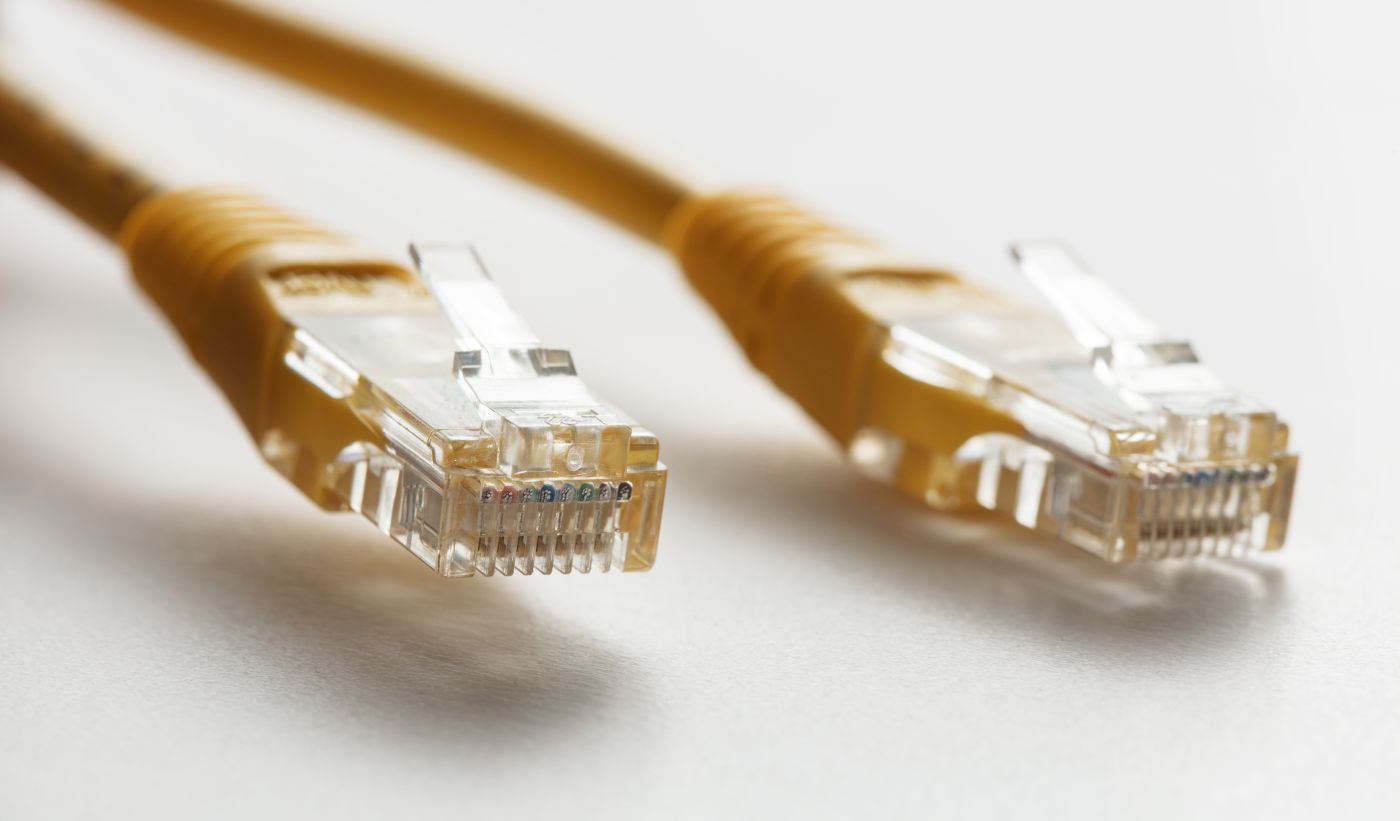EoMPLS là gì và cách thức hoạt động

Bạn có đang gặp khó khăn trong việc hiểu EoMPLS? Đừng lo lắng, bạn không phải là người duy nhất. EoMPLS, hay Ethernet over Multiprotocol Label Switching, có thể nghe như một mớ hỗn độn của các chữ cái viết tắt, nhưng nó là một công nghệ mạnh mẽ có thể nâng cao đáng kể khả năng của mạng của bạn. Trong hướng dẫn toàn diện này, chúng tôi sẽ làm sáng tỏ EoMPLS và cung cấp cho bạn một cái nhìn rõ ràng về cách thức hoạt động của nó.
Dù bạn là một chuyên gia IT hay một quản lý mạng, bài viết này sẽ trang bị cho bạn những kiến thức cần thiết để thành thạo EoMPLS. Chúng tôi sẽ đi sâu vào các khái niệm cơ bản, phân tích các thành phần kỹ thuật và khám phá các trường hợp sử dụng thực tế để minh họa cách EoMPLS có thể mang lại lợi ích cho tổ chức của bạn.
Xuyên suốt hướng dẫn này, chúng tôi sẽ tránh xa các thuật ngữ phức tạp và khó hiểu, trình bày thông tin một cách ngắn gọn và dễ tiếp cận. Vậy hãy cùng khám phá và mở khóa tiềm năng của EoMPLS.
Hiểu Các Khái Niệm Cơ Bản Về Mạng MPLS
Multiprotocol Label Switching (MPLS) là một kỹ thuật được phát triển vào những năm 1990 nhằm tăng tốc kết nối mạng bằng cách gửi các gói dữ liệu qua các đường dẫn đã được định sẵn, giảm thời gian quyết định của các bộ định tuyến. Không giống như định tuyến truyền thống, bao gồm các quyết định độc lập của từng bộ định tuyến và các biến thể đường dẫn tiềm năng, MPLS đảm bảo các đường dẫn nhất quán bằng cách sử dụng các nhãn trong tiêu đề gói dữ liệu. Mặc dù MPLS có thể tạo ra các đường dẫn riêng, nhưng nó không mã hóa dữ liệu, làm cho nó kém an toàn nếu không có các phương pháp mã hóa bổ sung như VPNs. Dù nó cung cấp tốc độ và độ tin cậy cho các ứng dụng thời gian thực và thiết lập mạng diện rộng (WAN), MPLS lại đắt đỏ, tốn thời gian để thiết lập và khó mở rộng, đặc biệt là với sự phát triển của các dịch vụ đám mây.
Không chỉ vượt trội trong việc chuyển mạch, MPLS còn xuất sắc trong việc bảo mật và tổ chức mạng. Tạo một đường hầm VPN MPLS (Virtual Private Networks tunnel) cho phép các kênh liên lạc an toàn trong môi trường mạng chia sẻ, đảm bảo tính toàn vẹn và bảo mật dữ liệu thông qua việc gán các nhãn riêng biệt.

Các Bộ Định Tuyến Khác Nhau Cho MPLS
Trong bối cảnh mạng, có nhiều bộ định tuyến EoMPLS và MPLS trong một cấu trúc liên kết mạng. Dưới đây là những gì mỗi bộ định tuyến có thể đại diện trong một kịch bản MPLS điển hình:
R1: Bộ Định Tuyến Biên Nhà Cung Cấp Đầu Vào (Ingress Provider Edge – PE Router)
R1 là bộ định tuyến đầu vào chịu trách nhiệm nhận lưu lượng từ mạng cục bộ (LAN). Khi một gói IP đến R1, nó đóng gói gói này trong một khung với tiêu đề Ethernet và gán một nhãn MPLS dựa trên địa chỉ IP đích. Nhãn này được chọn từ bảng chuyển tiếp nhãn của bộ định tuyến, bảng này ánh xạ đích đến một đường dẫn cụ thể trong mạng MPLS.
Trong một mạng EoMPLS, địa chỉ MAC nguồn-đích rất quan trọng. Địa chỉ MAC nguồn xác định người gửi, trong khi địa chỉ MAC đích báo cáo bộ định tuyến PE đầu vào (R1). Trong khung Ethernet, gói IP chứa địa chỉ IP nguồn và đích, xác định người gửi và người nhận. Những địa chỉ MAC này hướng dẫn đường đi của gói từ LAN nguồn đến mạng đích cuối cùng, vẫn không thay đổi trong mạng MPLS.
R2: Bộ Định Tuyến Chuyển Nhãn (Label Switch Router – LSR)
R2 là một Bộ Định Tuyến Chuyển Nhãn (LSR) hoạt động trong mạng lõi MPLS. Vai trò chính của nó là chuyển tiếp các gói MPLS dựa trên các nhãn của chúng. Khi một gói đến R2, bộ định tuyến đọc nhãn hiện tại, hoán đổi nó với một nhãn mới từ bảng chuyển tiếp của mình và gửi nó đến bước tiếp theo trong mạng. Quá trình này được gọi là hoán đổi nhãn và rất quan trọng cho việc định tuyến hiệu quả các gói qua mạng MPLS. R2 hoạt động như một trung gian, hỗ trợ chuyển tiếp liền mạch và nhanh chóng các gói có nhãn qua mạng lõi MPLS.
R3: Bộ Định Tuyến Biên Nhà Cung Cấp Đầu Ra (Egress Provider Edge – PE Router)
R3 là bộ định tuyến đầu ra nhận gói MPLS khi nó ra khỏi mạng lõi. Tại R3, nhãn MPLS được loại bỏ, để lộ khung Ethernet ban đầu. Bộ định tuyến PE đầu ra sau đó chuyển tiếp khung Ethernet này đến đích cuối cùng trong mạng đích. Vai trò của R3 rất quan trọng vì nó đánh dấu điểm thoát ra khỏi mạng MPLS và thực hiện bước cuối cùng của việc loại bỏ nhãn, đảm bảo gói được chuyển đến thiết bị cuối chính xác.

Sử Dụng Công Nghệ WAN EoMPLS
Ethernet over MPLS là một công nghệ cho phép các doanh nghiệp kết nối các vị trí khác nhau của họ trên khoảng cách rộng sử dụng Ethernet nhưng với những lợi ích bổ sung của MPLS. Hãy tưởng tượng bạn có các văn phòng ở các thành phố khác nhau và bạn muốn chúng giao tiếp như thể tất cả đều nằm trên cùng một mạng cục bộ. EoMPLS làm cho điều này trở nên khả thi bằng cách kết hợp tính chất đơn giản, nhanh chóng của Ethernet với các khả năng nâng cao của MPLS, chẳng hạn như khả năng mở rộng và chất lượng dịch vụ. Điều này đặc biệt hữu ích cho các doanh nghiệp cần các kết nối đáng tin cậy và hiệu suất cao cho các hoạt động như liên kết các trung tâm dữ liệu, kết nối các văn phòng chi nhánh hoặc thiết lập các hệ thống khôi phục sau thảm họa.
Về mặt thực tế, EoMPLS hoạt động bằng cách kết nối các thiết bị mạng cục bộ của bạn, được gọi là các thiết bị biên khách hàng (Customer Edge – CE), với các thiết bị mạng của nhà cung cấp, được gọi là các bộ định tuyến biên nhà cung cấp (Provider Edge – PE). Khi các gói dữ liệu của bạn đến các bộ định tuyến PE này, chúng được gán các nhãn MPLS và được gửi qua mạng MPLS của nhà cung cấp. Các nhãn này giúp định tuyến các gói một cách hiệu quả và đảm bảo chúng được chuyển giao nhanh chóng và đáng tin cậy, với ưu tiên được dành cho dữ liệu quan trọng nếu cần. Về cơ bản, EoMPLS sử dụng MPLS để mở rộng phạm vi của Ethernet, cung cấp một giải pháp mạnh mẽ và linh hoạt cho mạng diện rộng (WAN).
Đối với việc định tuyến gói IP, một bộ định tuyến PE đầu vào đóng gói các gói IP đến trong các khung Ethernet và gán các nhãn MPLS dựa trên các địa chỉ IP đích. Các nhãn này hướng dẫn các gói qua mạng MPLS, với mỗi Bộ Định Tuyến Chuyển Nhãn (LSR) hoán đổi nhãn để chuyển tiếp đúng cách. Tại bộ định tuyến PE đầu ra, nhãn MPLS được loại bỏ, và khung Ethernet được gửi đến đích cuối cùng của nó, cung cấp kết nối WAN liền mạch.
So Sánh Các Công Nghệ WAN Liên Quan
Mặc dù EoMPLS là một công nghệ mạnh mẽ để mở rộng mạng Ethernet, điều quan trọng là hiểu cách nó so sánh với các công nghệ khác dựa trên MPLS. Hãy xem xét hai lựa chọn thay thế phổ biến cho EoMPLS: VPLS (Dịch Vụ Mạng LAN Ảo) và MPLS-TP (Hồ Sơ Vận Chuyển MPLS).
Sự Khác Biệt Giữa EoMPLS và VPLS
Virtual Private LAN Service (VPLS) là một công nghệ khác dựa trên MPLS cho phép tạo ra các mạng LAN ảo trên một mạng diện rộng. Giống như EoMPLS, VPLS cho phép mở rộng mạng LAN liền mạch, nhưng nó hoạt động ở tầng liên kết dữ liệu thay vì tầng mạng. VPLS có thể là một lựa chọn phù hợp khi các tổ chức cần kiểm soát chi tiết hơn đối với lưu lượng Layer 2 hoặc khi họ cần hỗ trợ các giao thức không phải Ethernet cũ.
Sự Khác Biệt Giữa EoMPLS và MPLS-TP
MPLS Transport Profile (MPLS-TP) là một phần con của MPLS được thiết kế đặc biệt cho các mạng vận chuyển. Không giống như EoMPLS và VPLS, MPLS-TP tập trung vào việc cung cấp vận chuyển gói định tuyến và khả năng quản lý lỗi. Nó thường được sử dụng trong các mạng viễn thông nơi các thỏa thuận mức dịch vụ nghiêm ngặt và các cam kết về hiệu suất là cần thiết.
Sự Khác Biệt Giữa EoMPLS và SD-WAN
EoMPLS và SD-WAN phục vụ các mục đích khác nhau và mang lại những lợi thế riêng biệt. EoMPLS được thiết kế để mở rộng các mạng LAN Ethernet qua các mạng MPLS với độ phức tạp tối thiểu, làm cho nó trở thành một lựa chọn đáng tin cậy cho một số trường hợp sử dụng nhất định. Mặt khác, SD-WAN tận dụng các nguyên tắc mạng được định nghĩa bằng phần mềm (SDN) để định tuyến động lưu lượng qua các liên kết WAN khác nhau, bao gồm MPLS, băng thông rộng và LTE. Cả EoMPLS và SD-WAN đều có giá trị, với EoMPLS tập trung vào việc mở rộng các mạng LAN và SD-WAN cung cấp một giải pháp kết nối linh hoạt, sẵn sàng cho đám mây cho các nhu cầu mạng hiện đại.

Thách Thức Thường Gặp và Mẹo Khắc Phục Sự Cố cho EoMPLS
Trong khi EoMPLS có thể nâng cao khả năng của mạng, điều quan trọng là phải nhận biết các thách thức tiềm ẩn và có chiến lược khắc phục sự cố. Dưới đây là một số thách thức thường gặp với EoMPLS cùng với các mẹo khắc phục sự cố:
- Độ trễ và mất gói: EoMPLS phụ thuộc vào mạng MPLS cơ bản, điều này có thể giới thiệu thêm độ trễ và mất gói tiềm ẩn. Để giảm thiểu những vấn đề này, đảm bảo rằng cơ sở hạ tầng mạng của bạn có đủ băng thông và độ trễ thấp. Thực hiện các cơ chế QoS để ưu tiên lưu lượng quan trọng và giảm thiểu mất gói.
- Sự sẵn có của đường dẫn được bảo vệ: Đảm bảo sự sẵn có của một đường dẫn được bảo vệ trong EoMPLS có thể gặp khó khăn do các vấn đề về dư thừa đường dẫn, biến động hiệu suất và độ phức tạp trong cấu hình. Để giải quyết những vấn đề này, thường xuyên kiểm tra và giám sát cả đường dẫn chính và dự phòng, thiết kế mạng với các đường dẫn dự phòng đa dạng, đánh giá hiệu suất trong các điều kiện khác nhau, và thực hiện bảo trì chủ động.
- Lỗi cấu hình: Cài đặt cấu hình không chính xác có thể dẫn đến các vấn đề kết nối hoặc hiệu suất kém. Kiểm tra kỹ cài đặt cấu hình của bạn, đảm bảo tính nhất quán trên các thiết bị mạng và tuân thủ tài liệu của nhà cung cấp và các thực hành tốt nhất. Thường xuyên xem xét và kiểm tra các cài đặt cấu hình để phát hiện bất kỳ lỗi tiềm ẩn nào.
- Vấn đề tương thích: EoMPLS dựa vào sự tương thích của các thiết bị mạng khác nhau và các nhà cung cấp dịch vụ. Nếu bạn gặp phải các vấn đề tương thích, làm việc chặt chẽ với các nhà cung cấp và nhà cung cấp dịch vụ của bạn để khắc phục và giải quyết các vấn đề. Đảm bảo rằng các phiên bản phần mềm và firmware được cập nhật và tương thích với nhau.
- Mối quan tâm về bảo mật và quyền riêng tư: Mở rộng mạng Ethernet của bạn trên diện rộng giới thiệu các yếu tố về bảo mật và quyền riêng tư. Thực hiện các biện pháp bảo mật thích hợp, chẳng hạn như mã hóa và kiểm soát truy cập, để bảo vệ dữ liệu của bạn. Thường xuyên giám sát và kiểm tra lưu lượng mạng để phát hiện bất kỳ vi phạm bảo mật tiềm ẩn nào.
Thực Hành Tốt Nhất và Kỹ Thuật Tối Ưu EoMPLS
Để tối ưu hóa triển khai EoMPLS của bạn và tối đa hóa hiệu suất mạng, hãy xem xét các thực hành tốt nhất và kỹ thuật tối ưu hóa sau:
- Lập kế hoạch băng thông: Đánh giá cẩn thận yêu cầu băng thông của bạn và phân bổ đủ băng thông cho mỗi trang web được kết nối qua EoMPLS. Cân nhắc các yếu tố như khối lượng lưu lượng dự kiến, yêu cầu ứng dụng và sự phát triển trong tương lai. Thường xuyên giám sát việc sử dụng băng thông và điều chỉnh dung lượng khi cần thiết.
- Chính sách QoS: Thực hiện các chính sách Chất lượng Dịch vụ (QoS) để ưu tiên lưu lượng quan trọng và đảm bảo hiệu suất tối ưu cho các ứng dụng thoại, video và dữ liệu. Xác định các lớp QoS thích hợp và gán chúng cho các loại lưu lượng khác nhau dựa trên tầm quan trọng và độ nhạy cảm của chúng đối với độ trễ hoặc mất gói.
- Dự phòng đường dẫn: Thực hiện dự phòng đường dẫn để đảm bảo tính khả dụng cao và giảm thiểu thời gian chết. Cân nhắc sử dụng các bộ định tuyến PE dự phòng, các đường dẫn MPLS đa dạng hoặc các kỹ thuật tổng hợp liên kết để tạo ra các kết nối bền vững. Thường xuyên kiểm tra các kịch bản chuyển đổi dự phòng để xác minh tính hiệu quả của thiết lập dự phòng của bạn.
- Giám sát và tối ưu hóa hiệu suất: Thường xuyên giám sát mạng EoMPLS của bạn để xác định các nút thắt tiềm ẩn hoặc các vấn đề về hiệu suất. Sử dụng các công cụ giám sát mạng để theo dõi các chỉ số hiệu suất chính, chẳng hạn như độ trễ, mất gói và sử dụng băng thông. Thực hiện các biện pháp chủ động, chẳng hạn như kỹ thuật lưu lượng hoặc lập kế hoạch dung lượng, để tối ưu hóa hiệu suất mạng.
Suy Nghĩ Cuối Cùng về Cách EoMPLS Hoạt Động
Tóm lại, EoMPLS là một công nghệ mạnh mẽ cho phép các tổ chức mở rộng mạng Ethernet của họ trên các mạng diện rộng, tận dụng hiệu quả và khả năng quản lý lưu lượng của MPLS. Bằng cách hiểu các nguyên tắc cơ bản của MPLS, sự phát triển đến EoMPLS và những lợi ích mà nó mang lại, bạn có thể mở khóa tiềm năng của công nghệ này và tối ưu hóa hiệu suất mạng của bạn.
Cho dù bạn muốn mở rộng mạng LAN của mình một cách liền mạch, đơn giản hóa việc quản lý mạng hay đạt được tiết kiệm chi phí, EoMPLS cung cấp một loạt các lợi ích. Bằng cách lập kế hoạch cẩn thận triển khai của bạn và tận dụng sự linh hoạt của EoMPLS, bạn có thể điều chỉnh mạng của mình để đáp ứng các nhu cầu cụ thể của tổ chức, đảm bảo tính tin cậy, khả năng mở rộng và hiệu suất.
Nếu bạn thực sự đang tìm kiếm giải pháp hoàn hảo, thì IPTP Networks sẽ đáp ứng mọi yêu cầu của bạn. Với hơn 28 năm kinh nghiệm trong ngành và hiện diện tại các thành phố lớn trên toàn cầu, IPTP Networks cung cấp chuyên môn vô song và cơ sở hạ tầng mạng Tier-1 mạnh mẽ.
Hãy gia nhập với nhiều doanh nghiệp đã hưởng lợi từ mạng xương sống toàn cầu rộng lớn và các dịch vụ MPLS tiên tiến của họ. Cho dù bạn muốn tối ưu hóa hoạt động, cải thiện kết nối hay triển khai các giải pháp mạng tiên tiến, IPTP Networks đều sẵn sàng hỗ trợ bạn.
Liên hệ với chúng tôi để biết thêm thông tin.
